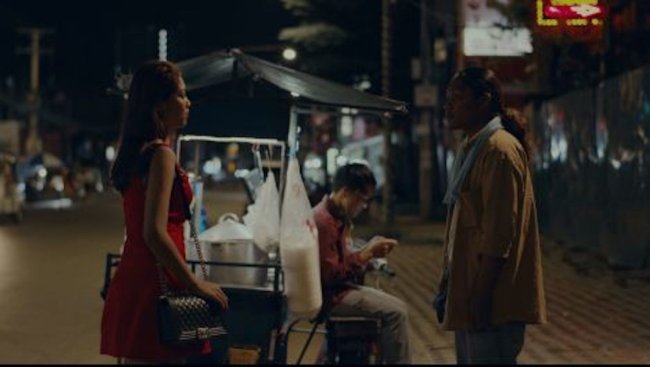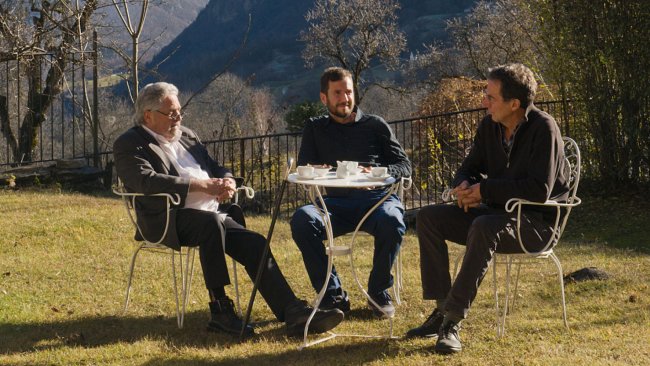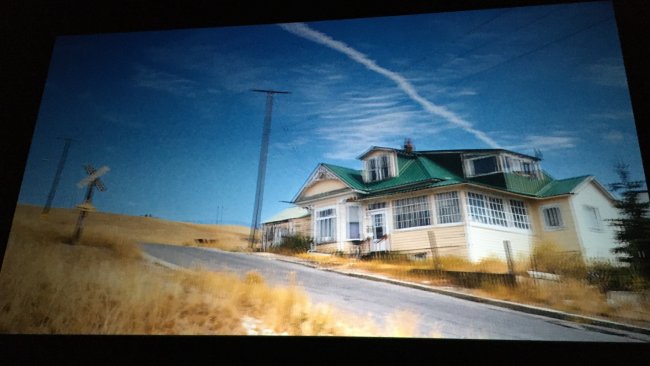We, the Dead - Aqerat | Edmund Yeo
[…] Together with the hospital, the house of the old puppet-maker is the only safe shelter for Hui Ling: we could say that the cinema and its imaginative power becomes a sort of protective and healing nest, outside of which the horrors of which men are able to flourish.
[…] Here, Yeo favours long complex shots (also thanks to Leslie Leon Lee's virtuosic camera work) and he finds an original balance between action and contemplation, which somehow recalls Gan Bi's particular style in "Kaili Blues".
Thanks to the gentle collaboration with the Cinéma Bellevaux Lausanne, Filmexplorer could meet and interview Edmund Yeo on his last movie.
Text: Giuseppe Di Salvatore | Audio/Video: Ruth Baettig
The original title “Aqerat” is the Rohingyan word for “afterlife” and refers to the tragedy of a people forced to flee from their oil-rich land to escape the massacres perpetrated by the Myanmar army. As they come to Malaysia through Thailand, they are coerced into human trafficking, which We, the Dead witnesses in a direct and almost documentary way. Actually, the documentary touch of the film is perfectly blended with a subjective perspective, that of Hui Ling, a Malaysian girl of the Chinese ethnic minority. This perspective not only provides the film with an individual story, an introspective layer and an overtly emotional dimension, it also shares Edmund Yeo’s own perspective of the Chinese minority, which is only one of many ethnic communities living in Malaysia. The multiple languages used in the film stress the multi-ethnicity of Malaysia and consequently make the mistreatment of the Rohingya – outsiders in a country already full of outsiders – appear as an absurd and even more inhuman deed.
What impresses us most in We, the Dead is how Edmund Yeo handles this hot topic with a complex and rich filmic style. The complexity of his style is evident insofar as his story embraces different social classes and references many different traditions: Buddhist temples, ancient ruins in the jungle, and the Thai-Malaysian puppet theatre appear as realities on the verge of oblivion. The puppet theatre in particular punctuates the story in the more significant dramaturgical moments, and assumes a clearly symbolic function that refers to cinema itself and its narrative imagination. Together with the hospital, the house of the old puppet-maker is the only safe shelter for Hui Ling: we could say that the cinema and its imaginative power becomes a sort of protective and healing nest, outside of which the horrors of which men are able to flourish.
This is the moment to highlight the richness of Yeo’s filmic style and, more precisely, the way in which his stylistic choices play a strategic role in the development of the story: it is with a notable change in the filmic layer that a precise dramaturgic shift in the story of We, the Dead is expressed. In the first part of the story, Hui Ling’s adventures in the world of human trafficking work as the instrument that draws the portrait of a region, a society, a phenomenon. Here, Yeo favours long complex shots (also thanks to Leslie Leon Lee’s virtuosic camera work) and he finds an original balance between action and contemplation, which somehow recalls Gan Bi’s particular style in Kaili Blues (see Filmexplorer's review). As in the other movie, the well-prepared long shots notwithstanding, the progress of the story gives us an improvisatory impression, following a stream of energy that comes from reality itself. To this regard, Yeo himself, in our interview, speaks of a «jazzy film-making», referring to the amount of improvisation left open for the actors, their adherence to the script, the framings, the camera movement. Here the collaboration with the impressive Daphne Low, the actress playing Hui Ling, was decisive, insofar as she guarantees the coherence of the multifaceted story, like the “head” of a jazz standard.
But in the middle of We, the Dead, when Hui Ling can no longer make compromises and cross social boundaries – assuming the exceptional, exclusive, extra-territorial status of the Rohingya – the dramaturgical shift is accompanied by a change in filmic style. The perspective is now doubled through Wei’s eyes; a romantic theme appears: the documentary aspects fade away leaving room to existential introspection, memory, associations. The editing work prevails over the long shots as the main dramaturgic vehicle at this point – the swinging jazz becomes free jazz, we could say. Is this the perspective of the dead? And is the “we” of the title finally referring to the couple, the bedrock of the society, insofar as it needs to flee from the corrupt society in order to rebuild it?
If We, the Dead celebrates freedom, especially through its unbridled filmic form, the soundscape of this movie conveys an ultimate unity: Sorayos Prapapan’s extraordinary work on the sound succeeds in joining the naturalistic elements of the movie with its most imaginative sequences through a perfect balance between environmental sounds and abstract music. It is also thanks to the sound dimension that We, the Dead is able to combine, in an original way, the documentary and the introspective aspects, making Hui Ling’s adventures both a geographical and spiritual journey at the same time.
This article contains a third-party video. If you would like to watch the video, please adjust your settings.
Info
We, the Dead – Aqerat | Film | Edmund Yeo | Cinéma Bellevaux Lausanne
First published: February 26, 2018






